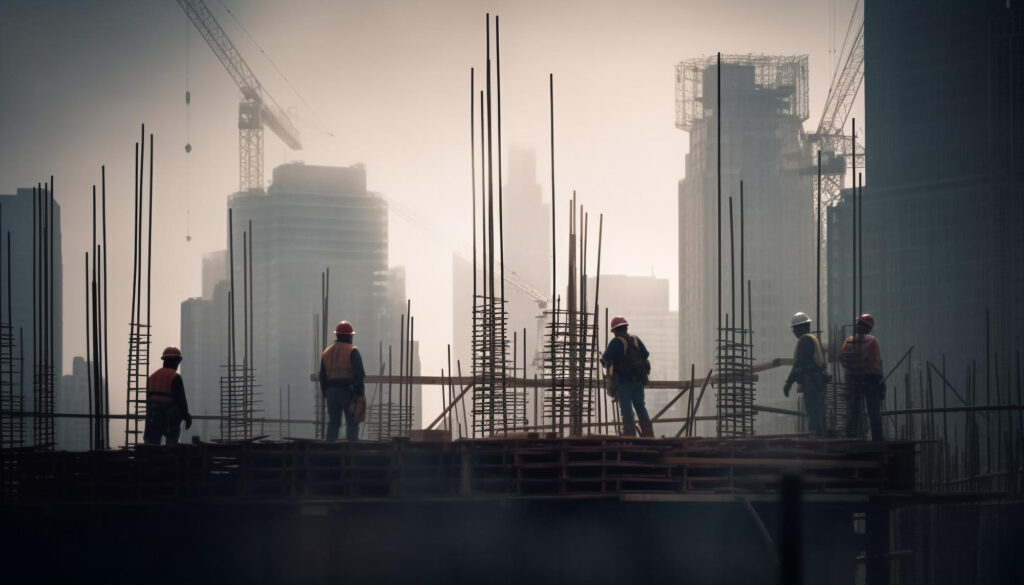Introduction of Sustainable Building :
Sustainable building practices are transforming the real estate industry, reshaping the way we design, construct, and inhabit residential and commercial spaces. With a growing awareness of environmental concerns and the need to reduce carbon emissions, the future of real estate is undeniably green. In this comprehensive exploration, we delve into the evolving landscape of sustainable building in both residential and commercial sectors. From innovative technologies and materials to sustainable design principles, we’ll uncover the driving forces behind this transformation and the benefits it brings to our communities and the planet.

Green Building Standards :
The foundation of sustainable building in both residential and commercial real estate lies in the adoption of green building standards. Organizations like LEED (Leadership in Energy and Environmental Design) and BREEAM (Building Research Establishment Environmental Assessment Method) have developed rigorous certification systems that promote eco-friendly construction practices. These standards encourage energy efficiency, water conservation, and the use of sustainable materials.
Energy Efficiency and Net-Zero Buildings :
The future of sustainable building is centered around energy efficiency. Residential and commercial buildings are increasingly incorporating features like advanced insulation, high-efficiency HVAC systems, and smart lighting to reduce energy consumption. Net-zero energy buildings, which produce as much energy as they consume, are becoming more attainable through renewable energy sources like solar panels and wind turbines.
Sustainable Materials and Construction Techniques :
Innovations in materials and construction techniques are fundamental to sustainable building. Developers are utilizing recycled and eco-friendly materials, such as reclaimed wood, recycled metal, and sustainable concrete mixes. Modular and prefabricated construction methods not only reduce waste but also improve construction efficiency and quality.
Green Roofs and Living Walls :
Green roofs and living walls are emerging as key components of sustainable building designs. These features provide insulation, reduce heat island effects, and improve air quality. They also enhance aesthetics and create valuable green spaces in urban environments.
Water Conservation and Management :
Efficient water use is a critical aspect of sustainable building. Low-flow fixtures, rainwater harvesting systems, and greywater recycling are becoming standard in both residential and commercial properties. Sustainable landscaping practices also focus on minimizing water usage and runoff.
Smart Building Technologies :
The integration of smart building technologies is transforming how we manage energy and resources in real estate. Automated systems control lighting, heating, and cooling based on occupancy and environmental conditions, optimizing energy usage. Smart meters and monitoring systems provide real-time data for efficient resource management.
Adaptive Reuse and Retrofitting :
Sustainable building is not limited to new construction; it also involves the adaptive reuse and retrofitting of existing structures. Converting old factories into residential lofts or repurposing commercial spaces for co-working environments not only preserves architectural heritage but also reduces the need for new construction.
Wellness-Centric Design :
Wellness-centric design principles are gaining traction in both residential and commercial real estate. Biophilic design, which incorporates natural elements into the built environment, promotes mental and physical well-being. Improved indoor air quality, access to natural light, and spaces that encourage physical activity contribute to healthier and happier occupants.
Benefits and Impact :
The adoption of sustainable building practices in residential and commercial real estate offers numerous benefits. It reduces operational costs through energy and water savings, enhances property value, and attracts environmentally conscious buyers and tenants. Moreover, sustainable buildings contribute to global efforts to combat climate change by reducing greenhouse gas emissions and resource consumption. Sustainable designs also promote healthier and more productive living and working environments, improving the quality of life for occupants.
Challenges and Future Outlook :
Despite the significant progress in sustainable building, challenges remain. Upfront costs can be higher for green construction, though these investments often pay off in the long term through reduced operating expenses. Overcoming regulatory barriers and educating stakeholders about the benefits of sustainable building are ongoing challenges.
In the future, we can expect to see continued advancements in sustainable building technologies, increased adoption of green building standards, and a growing emphasis on circular economy principles. As society becomes more environmentally conscious, sustainable building practices will play an increasingly vital role in shaping the future of residential and commercial real estate, creating spaces that are not only aesthetically pleasing but also environmentally responsible and socially beneficial.
Conclusion :
The future of sustainable building in residential and commercial real estate is bright and promising. Green building standards, energy-efficient technologies, sustainable materials, and a focus on wellness-centric design are transforming the industry. The benefits of sustainability extend beyond cost savings to include environmental conservation, improved quality of life for occupants, and a contribution to global efforts to combat climate change. As sustainable building practices become more accessible and cost-effective, we can look forward to a future where sustainable living and working environments are the norm, creating a better world for generations to come.
Explore more informative articles by checking out our other blog posts.
